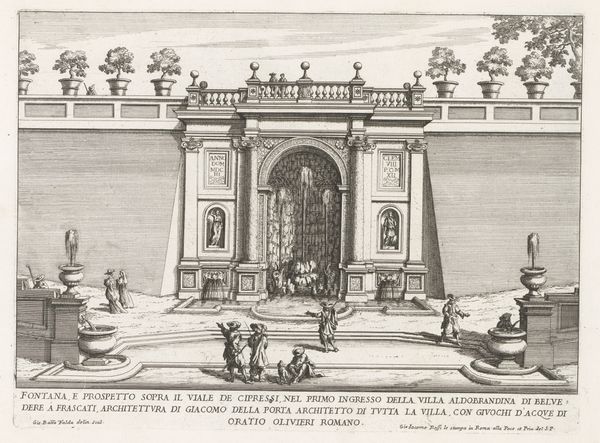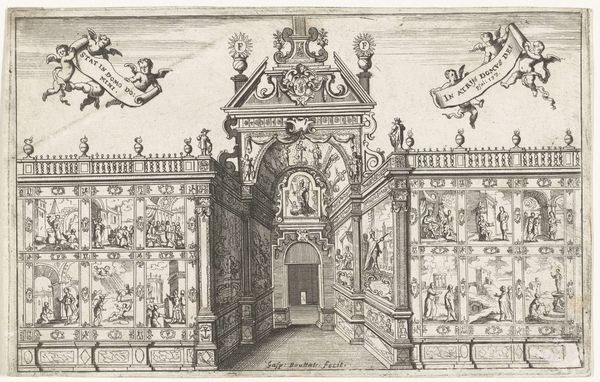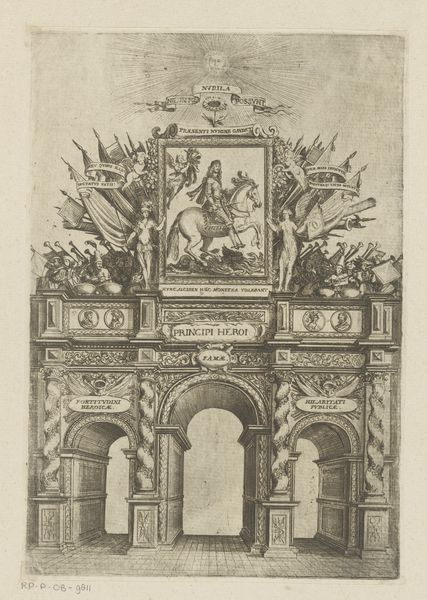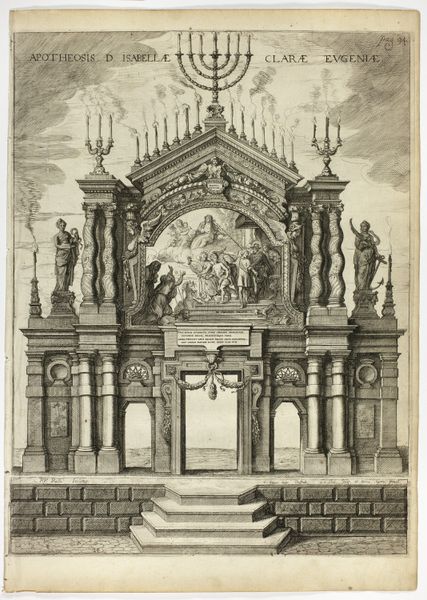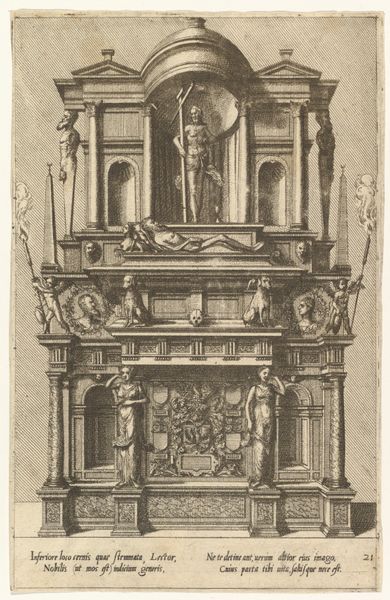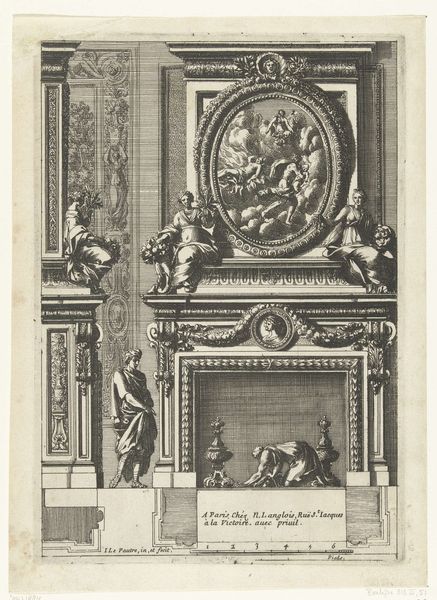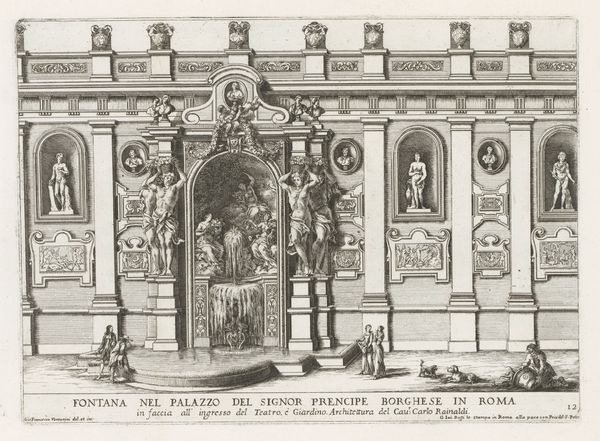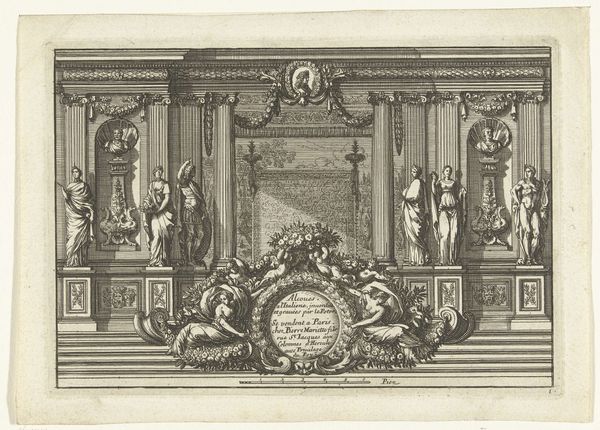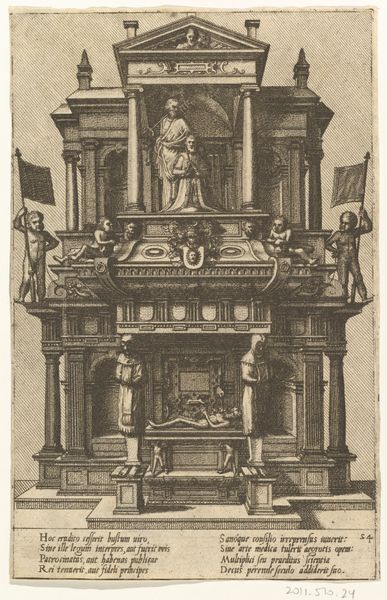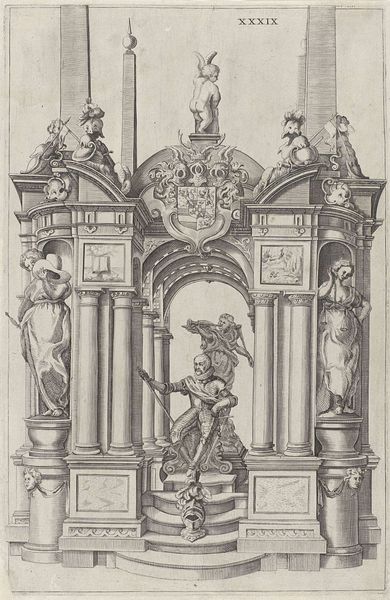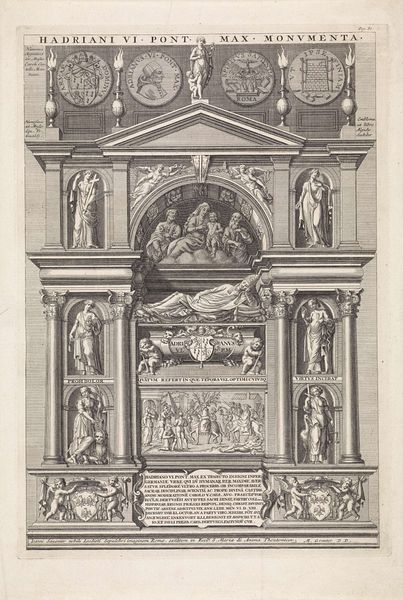
Nymphaeum in de binnenplaats van het Palazzo Borghese te Rome 1653 - 1691
0:00
0:00
print, engraving, architecture
#
baroque
# print
#
pen illustration
#
pen sketch
#
form
#
line
#
cityscape
#
history-painting
#
engraving
#
architecture
Dimensions: height 217 mm, width 302 mm
Copyright: Rijks Museum: Open Domain
This engraving of the Nymphaeum in the courtyard of the Palazzo Borghese in Rome was made in the late 17th century by Giovanni Francesco Venturini. It's a fascinating example of how art was used to project power and status. Let's consider the social and cultural context in which this image was created. Rome, during this period, was a city dominated by powerful families like the Borghese, who used their wealth and influence to commission grand works of art and architecture. The Nymphaeum itself, with its elaborate sculptures and cascading water, would have been a symbol of the Borghese family's wealth, taste, and connection to classical antiquity. Note the figures scattered in the foreground, who add a sense of scale and suggest how the space was used. Understanding this print requires us to consider the social conditions that shaped its production and reception. We might ask, for example, who had access to the Palazzo Borghese? How did the Nymphaeum function as a site of social display and interaction? By exploring these questions, we can gain a deeper appreciation of the complex relationship between art, power, and society in 17th-century Rome. We would also want to explore resources related to the Borghese family and architectural plans of the Palazzo.
Comments
No comments
Be the first to comment and join the conversation on the ultimate creative platform.
